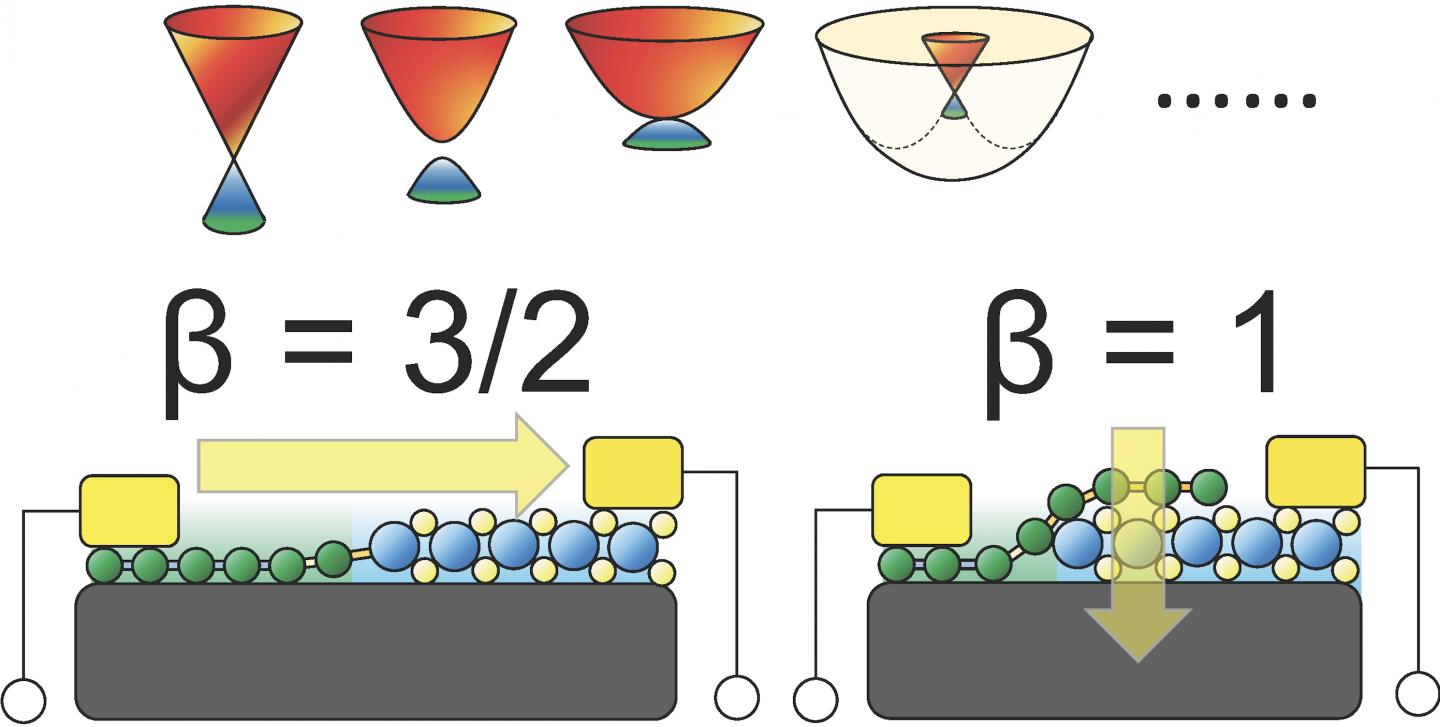Schottky diode is composed of a metal in contact with a semiconductor. Despite its simple construction, Schottky diode is a tremendously useful component and is omnipresent in modern electronics. Schottky diode fabricated using two-dimensional (2D) materials have attracted major research spotlight in recent years due to their great promises in practical applications such as transistors, rectifiers, radio frequency generators, logic gates, solar cells, chemical sensors, photodetectors, flexible electronics, and so on.
The understanding of the 2D material-based Schottky diode is, however, plagued by multiple mysteries. Several theoretical models have co-existed in the literatures and a model is often selected a priori without rigorous justifications. It is not uncommon to see a model, whose underlying physics fundamentally contradicts with the physical properties of 2D materials, being deployed to analyze a 2D material Schottky diode.
Reporting in Physical Review Letters, researchers from the Singapore University of Technology and Design (SUTD) have made a major step forward in resolving the mysteries surrounding 2D material Schottky diode. By employing a rigorous theoretical analysis, they developed a new theory to describe different variants of 2D-material-based Schottky diodes under a unifying framework. The new theory lays down a foundation that helps to unite prior contrasting models, thus resolving a major confusion in 2D material electronics.
“A particularly remarkable finding is that the electrical current flowing across a 2D material Schottky diode follows a one-size-fits-all universal scaling law for many types of 2D materials,” says first-author Dr. Yee Sin Ang from SUTD.
Universal scaling law is highly valuable in physics since it provides a practical “Swiss Army knife” for uncovering the inner workings of a physical system. Universal scaling law has appeared in many branches of physics, such as semiconductor, superconductor, fluid dynamics, mechanical fractures, and even in complex systems such as animal life span, election results, transportation and city growth.

Schematic drawing of a 2D-material-based lateral (left) and vertical (right) Schottky diode. For broad classes of 2D materials, the current-temperature relation can be universally described by a scaling exponent of 3/2 and 1, respectively, for lateral and vertical Schottky diodes.
The universal scaling law discovered by SUTD researchers dictates how electrical current varies with temperature and is widely applicable to broad classes of 2D systems including semiconductor quantum well, graphene, silicene, germanene, stanene, transition metal dichalcogenides, and the thin-films of topological solids.
“The simple mathematical form of the scaling law is particularly useful for applied scientists and engineers in developing novel 2D material electronics,” says co-author Professor Hui Ying Yang from SUTD.
The scaling laws discovered by SUTD researchers provide a simple tool for the extraction of Schottky barrier height — a physical quantity critically important for performance optimization of 2D material electronics.
“The new theory has far reaching impact in solid state physics,” says co-author and principal investigator of this research, Professor Lay Kee Ang from SUTD. “It signals the breakdown of classic diode equation widely used for traditional materials over the past 60 years, and shall improve our understanding on how to design better 2D material electronics.”




